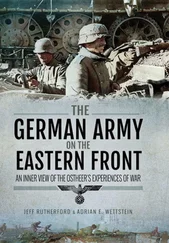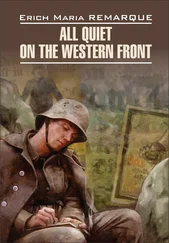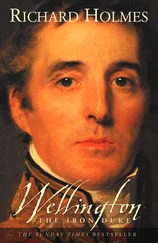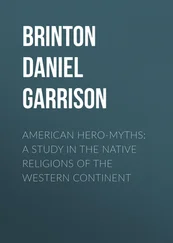Alongside the evolution of a literary cult which, by and large, came to see the war as waste built on futility and compounded by human error, there grew up a historical genre which was scarcely less influential. During the war there had been two major schools of strategic policy in Britain. One, the Easterners, took their tone from a letter written by Lord Kitchener to Sir John French, British commander in chief on the Western Front, at the very beginning of 1915 – Kitchener suggested that the German lines in France might well be ‘a fortress which cannot be taken by assault’, and suggested that there might be merit in looking elsewhere. Gallipoli and Salonika were both offspring of this logic. The other, the Westerners, would have agreed with Sir Douglas Haig, who took over as commander in chief in late 1915, that the war could only be won by beating the German army in the field. And as Haig announced in his final dispatch, this could only be accomplished by ‘one great continuous engagement’.
What happened in the 1920s and 1930s is that the Easterners, who had shown little sign of winning the war, certainly won the historical argument. Churchill’s The World Crisis lambasted offensives on the Western Front which were, he declared, ‘as hopeless as they were disastrous’. Churchill had served as a cavalry officer, charging at Omdurman in 1898, and had been a battalion commander on the Western Front in early 1916. I can forgive him much on those counts alone: whatever he lacked it was not physical courage. But what of Lloyd George, whose mid-1930s Memoirs announced the bankrupcy of ‘narrow, selfish and unimaginative strategy and … [the] ghastly butchery of a succession of vain and insane offensives’? He accused generals not simply of professional incompetence and ignorance of the real conditions, but of personal cowardice. These accusations gloss over the fact that, as prime minister, Lloyd George had a direct personal responsibility for the very strategy he criticised. And Lloyd George was not right to carp about the cowardice of First World War generals. About fifty-eight were killed, or died of wounds received. Three divisional commanders were killed at Loos in September 1915, more British divisional commanders than were killed by enemy fire in the whole of the Second World War. 5
There was a more reputable combatant in the wings. Captain Basil Liddell Hart, whose evergreen rank veiled about six weeks’ service at the front followed by a longer stint in the Army Educational Corps, argued that Britain’s commitment to the Western Front clearly violated his own, oft reinvented, strategy of indirect approach and clearsighted description of the British way in warfare. Britain should have avoided that lethal concentration of troops and gone somewhere else. He thought that Gallipoli had been promising, and T. E. Lawrence had done really well in the desert. He could produce no evidence that the destruction of railways in the Hejaz made the teacups rattle in Berlin, but no matter. What had really brought Germany down, he argued, was naval blockade and internal collapse. I must not trivialise Liddell Hart, for he remains a commentator of rare insight, was helpful to students and, even late in life, was capable of surprising generosity to Haig. But he is the archpriest of the argument that there must have been a better way: his liturgy, after all these years, still has the power to inspire.
The historical debate – not really the right word, for there was never much debate about it – was rejuvenated in the 1960s. Events such as the Cuban missile crisis, the Aldermaston marches, the Vietnam War and the burgeoning of an independent youth culture encouraged an iconoclasm, in which the generals of the First World War received unprecedented critical attention. Despite the reduction in the release period of public records from fifty to thirty years, meaning that most documents on the war became available in 1968, there was no immediate rush to reinterpret the war based on this evidence. Indeed, perhaps the most influential book ever written on the war, A. J. P. Taylor’s The First World War: An Illustrated History, was little more than a triumphant flambéeing (with the blowtorch lit by Liddell Hart) of the leftovers of the historiography of the 1930s.
On re-reading Taylor’s book I am stunned by its brilliant, incisive juxtaposition of bons mots, real insights and excruciating errors. ‘Failure [at Third Ypres in 1917] was obvious by the end of the first day to everyone except Haig and his immediate circle,’ it declares. Obvious, that is, to everyone except the German high command, which grew gloomier as the battle wore on, and thousands of British participants, whose letters and diaries often testify to a confidence not shared by those writing in the foreknowledge of failure. Even the Australian Official History speaks approvingly of 2nd Army’s attacks up the Menin Road in September, almost two months after everyone was meant to have lost confidence in the battle.
Leon Wolf’s In Flanders Fields, whose publication actually predated that of A. J. P. Taylor’s book, was in many respects a more reliable work. A study of the 1917 campaign around Ypres, it is well written, and makes good use of memoirs and interwar histories. But it too confirmed the primacy of a school of historiography which seemed more interested in expounding a priori assumptions than looking at the facts. It contains no real sense of the campaign’s strategic purpose, nor is there any feel at all for the British army’s vast improvements in tactical method. And lastly, Alan Clark’s The Donkeys, for all its verve and amusing narrative, added a streak of pure deception to writings on the First World War. Its title is based on the ‘Lions led by Donkeys’ conversation that apparently took place between Hindenburg and Ludendorff. Sadly for historical accuracy, there is no evidence whatever for this: none. Not a jot or scintilla. The real problem is that such histories have sold well and continue to do so. They reinforce historical myth by delivering to the reader exactly what they expect to read.
But help is at hand. The scrabble of feet on duckboards announces the arrival of supports. First there was John Terraine’s Douglas Haig: The Educated Soldier, published in 1963, and really a brave and remarkably impartial piece for its day. Terraine held his ground alone for some time, assailed by pastiches like Oh What a Lovely War, but by the mid-1970s revisionism with some real scholarly weight behind it crashed into the argument. Historians such as Tim Travers, Robin Prior and Trevor Wilson worked with the newly-released official documents to look at the British high command, Peter Simpkins examined the New Armies, Paddy Griffith charted the improvement of British tactics, and John Bourne, of the admirable Centre for First World War Studies at Birmingham University, initiated a mass of work on the background of British generals. It is a cruel reflection on book-buying that some of the most important work was not the most widely read: J. G. Fuller’s Troop Morale and Popular Culture and Gary Sheffield’s Leadership in the Trenches have never enjoyed quite the sales of Alan Clark’s The Donkeys.
I do not applaud the appearance of these works just because some of them are revisionist – as it happens I find myself in the uncomfortable No Man’s Land of historiography, collecting salvoes from both extremes – but because they are serious and scholarly in a way that an awful lot of earlier work simply was not. The war had already attracted too many historians who were determined to bend its events to fit their own analytical framework, jamming their pastry-cutters onto the evidence, and either discarding anything that lay outside their intriguing shape, or rolling it extra thin if there was not quite enough. Last year’s publication of the first volume of Hew Strachan’s magisterial First World War does, in a way, mark a turning point in the whole process: here we have scholarship blended with emotion, and a successful attempt to look at the conflict as a world war, not just as the Western Front with attached sideshows.
Читать дальше












